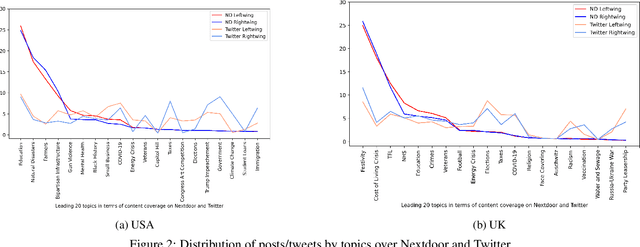How Similar Are Elected Politicians and Their Constituents? Quantitative Evidence From Online Social Network
Paper and Code
Jul 03, 2024



How similar are politicians to those who vote for them? This is a critical question at the heart of democratic representation and particularly relevant at times when political dissatisfaction and populism are on the rise. To answer this question we compare the online discourse of elected politicians and their constituents. We collect a two and a half years (September 2020 - February 2023) constituency-level dataset for USA and UK that includes: (i) the Twitter timelines (5.6 Million tweets) of elected political representatives (595 UK Members of Parliament and 433 USA Representatives), (ii) the Nextdoor posts (21.8 Million posts) of the constituency (98.4% USA and 91.5% UK constituencies). We find that elected politicians tend to be equally similar to their constituents in terms of content and style regardless of whether a constituency elects a right or left-wing politician. The size of the electoral victory and the level of income of a constituency shows a nuanced picture. The narrower the electoral victory, the more similar the style and the more dissimilar the content is. The lower the income of a constituency, the more similar the content is. In terms of style, poorer constituencies tend to have a more similar sentiment and more dissimilar psychological text traits (i.e. measured with LIWC categories).
 Add to Chrome
Add to Chrome Add to Firefox
Add to Firefox Add to Edge
Add to Edge